
The Rules of Golf
The "new" Rules of Golf, which took effect on January 1, 2019, have represented the most significant changes to governing play since the mid-1980s. To assist in the educational process, the NJSGA provides annual seminars and informative resources.
Key Rules Explained
Rules of Golf Review - Teeing Area
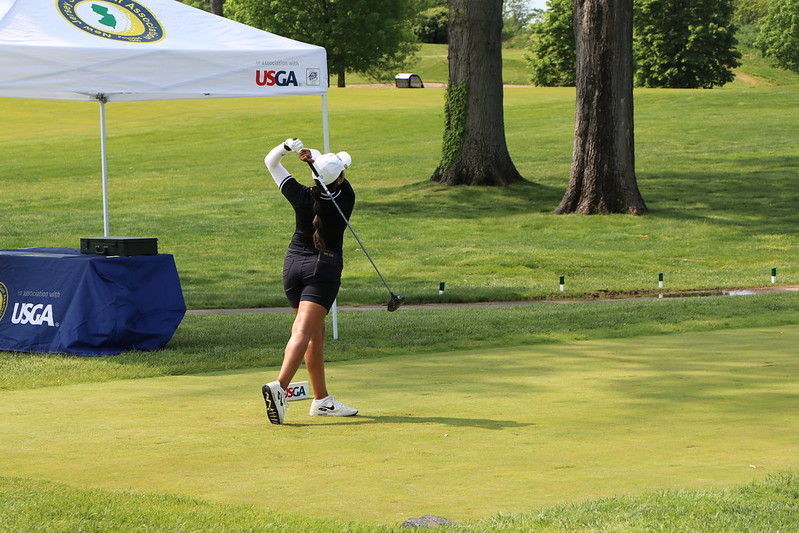 The scenario:
The scenario:
A player reaches the 3rd hole where the ground of the teeing area is uneven and not level. The player tees the ball in the flattest part of the teeing area but when taking a stance one of the tee markers interferes, so the player reflexively reaches down and moves the tee marker. Before making the stroke, another player in the group says that moving a tee marker is not allowed.
What happens now?
The teeing area rules apply whenever a player is required or allowed to play a ball from the teeing area. These rules allow for certain conditions in the teeing area to be improved, such as altering the surface of the ground. However, tee markers are treated as being fixed and there are restrictions to when they can be moved (e.g., considered movable obstructions.)
Unfortunately, in this scenario, the player is not permitted to move a tee marker – but, within the new and more forgiving rules – the player may correct the mistake of moving the tee marker before making a stroke. If the mistake is corrected (and the tee marker is replaced to its original position), there is no penalty. (The player is also allowed to move the ball to another part of the teeing area, without penalty.) If the player made a stroke without replacing the tee marker, the general penalty would have applied.
For more information, key rules references are R 6.2a, 6.2b(3,4), 8.1a and 8.1c(1).
Rules Review - Searching and Identifying a Ball
 As part of the NJSGA’s ongoing Rules of Golf educational program, the NJSGA Rules Committee will “bring you along” with a group of players during their round to review common Rules scenarios. The second of the series involves searching and identifying your ball.
As part of the NJSGA’s ongoing Rules of Golf educational program, the NJSGA Rules Committee will “bring you along” with a group of players during their round to review common Rules scenarios. The second of the series involves searching and identifying your ball.
The scenario is in 2 parts:
Part 1:
A group tees off on the 5th hole where one player’s shot lands far-left into an area of tall fescue grass. All three players in the group arrive at the estimated spot that they think the ball landed and immediately notice a ball in the fescue – but the ball is covered by a few leaves. It is unclear whether this is the player’s ball. No other balls are visible in this area.
What happens now?
If the ball in question might be the player’s ball, but cannot be identified as it lies, the player may lift (or rotate) the ball – but before touching the ball, the spot of the ball must first be marked. The ball may not be cleaned more than needed to identify it. In this case, the player properly marked the spot, moved the leaves, and then rotated the ball but realized that this was not the original ball. This process took 1 minute.
Part 2:
After the player realized the ball was not the original, the player began searching. About 2 ½ minutes later (and 3 ½ minutes after getting to that area) the player accidentally kicks a ball hidden at the bottom of the fescue which had been covered by a few leaves. That ball is identified as the player’s ball.
What happens now?
The 1-minute time spent identifying a ball does not count in the 3-minute search time. The time of search stopped when the player found the wrong ball and stopped searching. So, the player finding the ball within the 2 ½-minute search was within the 3-minute search time allowed by the Rules. Further, since the player was fairly searching for the ball, there is no penalty for accidentally moving it.
Having accidently moved the ball, the player now estimates its original position and replaces the ball on that spot – in this case deep in the fescue. Loose impediments (e.g., leaves) do not need to be replaced even though the ball would have coincidentally lied under the leaves.
For more information, key Rules references are 7.1a, 7.3, 7.4, Interpretation 7.4/1 18.2a(1)/1. 18.2a(1)/3.
Rules Review - Penalty Areas
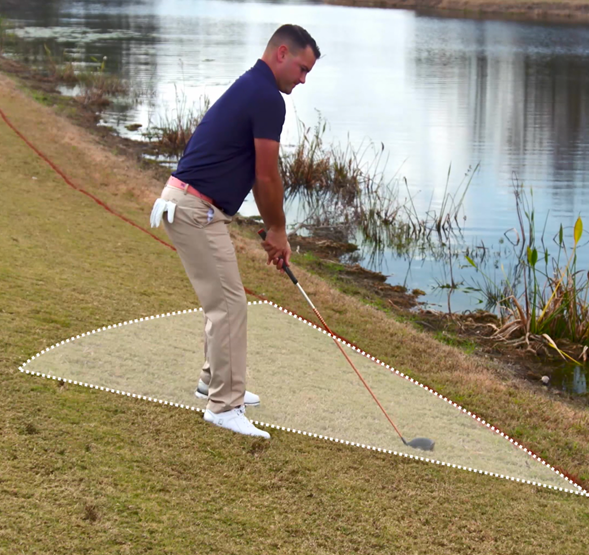 As part of the NJSGA’s ongoing Rules of Golf educational program, the NJSGA Rules Committee will “bring you along” with a group of players during their round to review common Rules scenarios. The third of the series involves Penalty Areas.
As part of the NJSGA’s ongoing Rules of Golf educational program, the NJSGA Rules Committee will “bring you along” with a group of players during their round to review common Rules scenarios. The third of the series involves Penalty Areas.
The scenario is:
In a match between A and B, player A’s second shot on the par 5, 7th hole is well-struck but travels left of the fairway toward a penalty area. The ball is quickly found in the penalty area in a very playable position, but the red stake identifying the penalty area interferes with A’s swing, so A removes the stake (which was easily done.) Before making a stroke, Player A moves several stones and twigs lying near the ball, and then takes several practice swings touching the ground in the penalty area each time.
Player A then executes a great shot, and the ball comes to rest on the putting green very near the hole, leaving a sure birdie putt - which he holes. Player B makes par, so he loses the hole. However, while walking to the 8th tee, player B approaches a Rules official and makes a claim that the player A violated several rules with respect to permitted actions in a penalty area.
What happens now?
Good news for player A. Stakes used to identify penalty areas are considered movable obstructions. When a player’s ball is in a penalty area, a player may remove a movable obstruction anywhere on or off the course. In this case, the red stake was moved with reasonable effort and did not damage the course, so it met the definition of movable obstruction. Therefore, there is no penalty for this action.
Secondly, the Rules official explained that when a ball lies in a penalty area, the player has the option to play the ball as it lies without penalty under the same rules which apply to a ball lying in the general area (e.g., the fairway). This includes taking practice swings that touch the ground.
While a player cannot improve the conditions affecting a stroke (such as improving your lie by bending long grass or repairing divots), a player is permitted to move loose impediments such as stones or unattached twigs or sticks. There is no penalty to the player for any of these actions.
The referee rules that the player A won the hole.
(For more information key Rules references are R 17.1b, R 15.2, Definition of Obstruction/ Movable Obstruction, R 8.1. 8.1a, 8.1b)
Rules Review - Bunkers
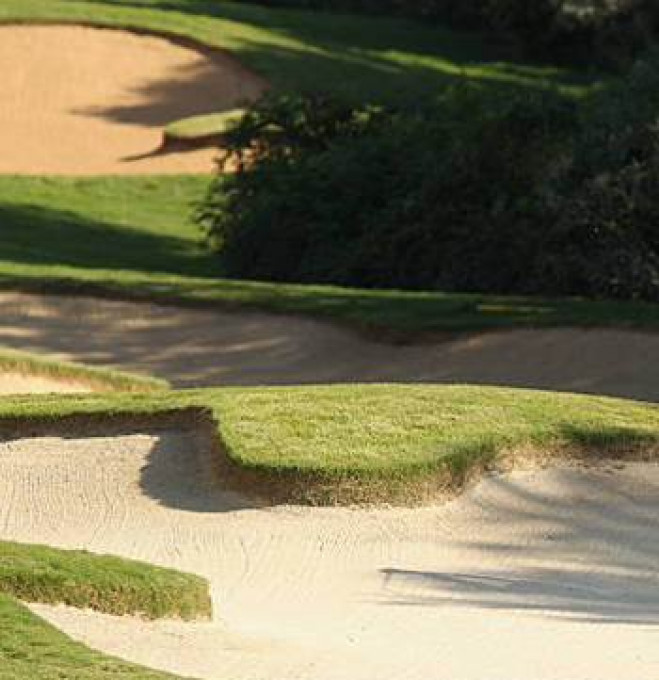 As part of the NJSGA’s ongoing Rules of Golf educational program, the NJSGA Rules Committee will “bring you along” with a group of players during their round to review common Rules scenarios. The third of the series involves Bunkers.
As part of the NJSGA’s ongoing Rules of Golf educational program, the NJSGA Rules Committee will “bring you along” with a group of players during their round to review common Rules scenarios. The third of the series involves Bunkers.
The scenario is:
A player’s tee shot on the par 4, 9thth hole was slightly pulled and ends up in a fairway bunker on the left side of the fairway. The ball is in the middle of the bunker and in a very playable lie – but it is surrounded by several large stones, acorns and a paper cup. Not sure which club to hit, the player carries three clubs into the bunker – and after selecting the club to use, drops the other 2 clubs in the bunker. The player then carefully removes the stones and acorns without touching the ball. However, while moving the paper cup, the player accidentally causes the ball to move. The player is unsure of how to proceed.
What happens now?
Good news for the player. The rules allow a player to place any equipment in the bunker if not done deliberately to test the condition of the sand with the intent of learning information for the next stroke. The player is also allowed to move loose impediments and movable obstructions – and any reasonable touching or movement of the sand is permitted while doing so. While the player would get a penalty for causing the ball to move when moving loose impediments, the player does not get a penalty for the accidental movement of the ball in removing the paper cup (a movable obstruction). In this case, the player must replace the ball on its original spot. If the player fails to replace the ball, it is a two-stroke penalty.
For more information, key rules references are 12.2a, 12.2b, 15.1b, 15.2b, 9.4, 14.7 and clarification to 1.3c(4) (December 2018).
Rules Review - The Putting Green
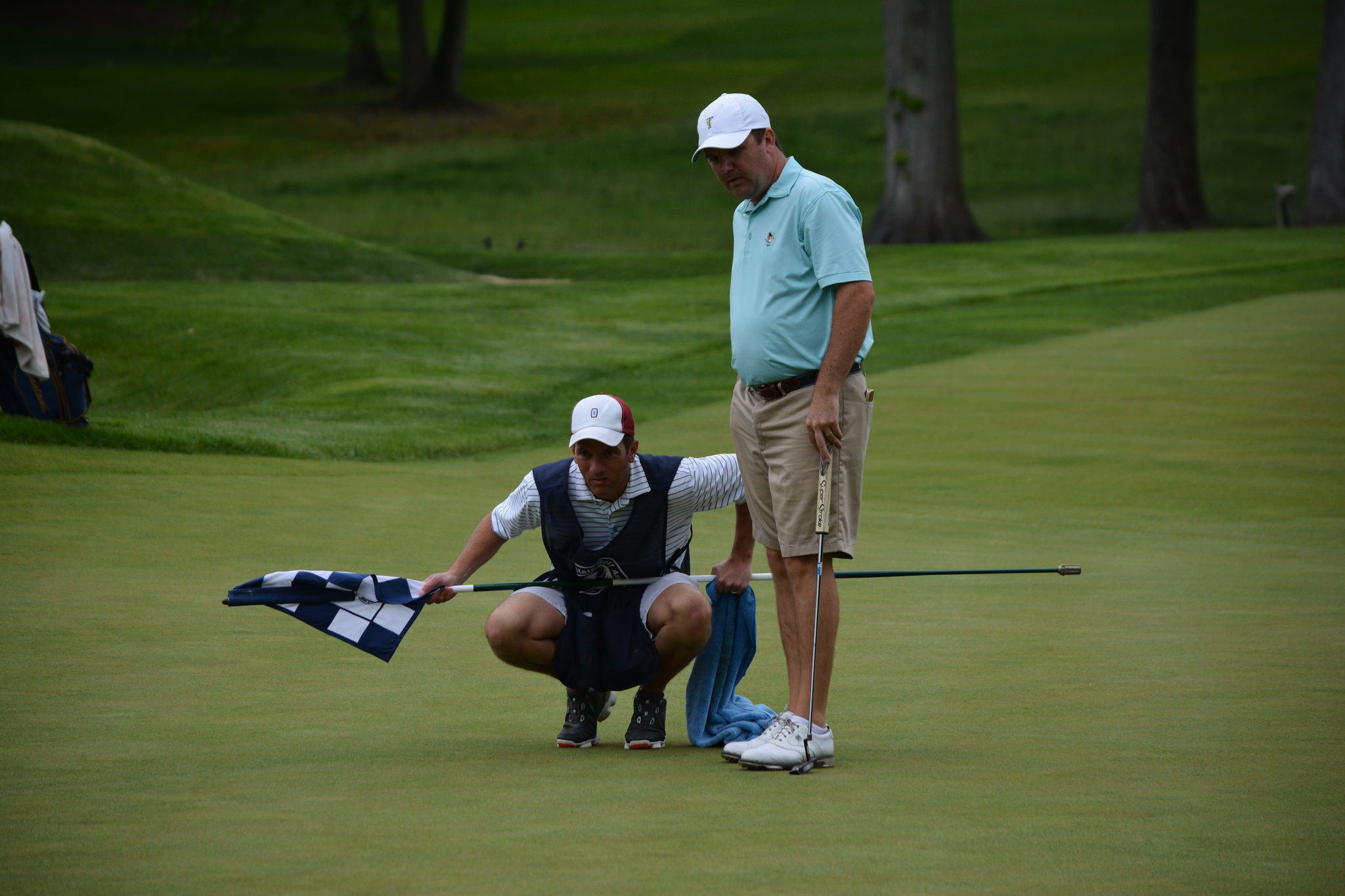 As part of the NJSGA’s ongoing Rules of Golf educational program, the NJSGA Rules Committee will “bring you along” with a group of players during their round to review common Rules scenarios. The fifth of the series involves the Putting Green.
As part of the NJSGA’s ongoing Rules of Golf educational program, the NJSGA Rules Committee will “bring you along” with a group of players during their round to review common Rules scenarios. The fifth of the series involves the Putting Green.
The scenario is:
In a stroke play event, players A, B and C have all played their 2nd shots on the 11th hole. Players A and B are on the green, but player C’s ball is off the green – and on the fringe. On C’s line of play is a pitch mark which is partly on the green and partly on the fringe – in addition to two other pitch marks on the green closer to the hole. Player C repairs all three pitch marks before putting from the fringe.
Player B’s ball is barely on the green, but because the green slopes severely from left-to-right, Player B’s line of play is through the left fringe. On the fringe, there is a sprinkler head which interferes with his line of play, and player B wishes to take relief from the sprinkler head (which is an immovable obstruction).
Player A’s ball is on the green - approximately 10 feet from the hole. However, since it is early in the season and part of the green has natural imperfections (a bare area and some uneven growth), player A wishes to repair this area.
Also, the three players all notice that the hole itself is damaged, presumably from the previous group being careless in replacing the flagstick.
What happens now?
Damage to the hole itself can be repaired if it was not caused from normal wear and tear. Since damage to the hole was likely caused by the flagstick, it can be repaired and all three players benefit from that.
Unfortunately, there is no relief for Player A. While most damage to the putting green can be repaired, natural surface imperfections are not considered damage to the putting green.
Player B gets good news – and free relief. Under the new rules, when a ball is on the putting green and there is interference from an abnormal course condition (e.g., an immovable obstruction) that intervenes on the line of play, you get free relief even though the immovable obstruction was not on the green. Player B’s relief point however, must be either on the putting green or in the general area.
Player C receives no penalty since a player may repair damage to the putting green no matter whether the ball is on or off the putting green. Additionally, the rules allow a player to repair the entire damage even if the damage is partially on and partially off the putting green. This applies not only to pitch marks but also to other areas of damage such as animal tracks, hoof marks, shoe prints or club indentations.
(For more information key Rules references are R 13.1c(2), Interpretation 13.1c(2)/2, 16.1a(1), 8.1b, Interpretation 8.1b/7)
Rules Review - Accidental Deflections
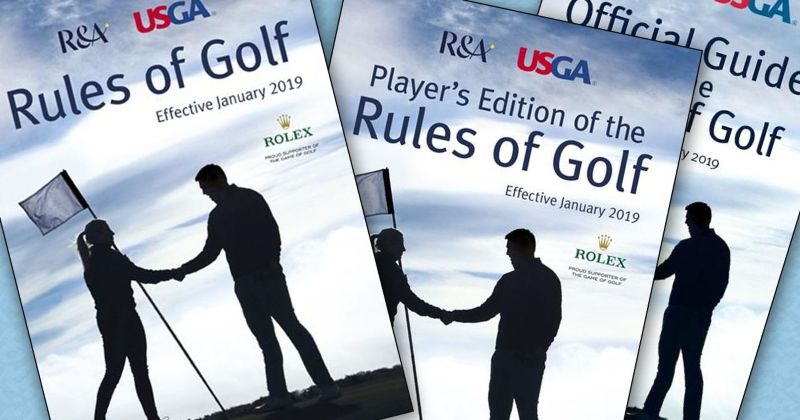 As part of the NJSGA’s ongoing Rules of Golf educational program, the NJSGA Rules Committee will “bring you along” with a group of players during their round to review common Rules scenarios. The seventh of the series involves Accidental Deflections.
As part of the NJSGA’s ongoing Rules of Golf educational program, the NJSGA Rules Committee will “bring you along” with a group of players during their round to review common Rules scenarios. The seventh of the series involves Accidental Deflections.
The scenario is:
Player A and Player B are playing the 14th hole, a slight dogleg right protected by trees. A’s caddie is standing at the corner of the dogleg, about 210 yards off the tee and does not see A’s tee shot, which hits a tree and accidentally deflects off his shoulder and onto the fairway. Player A plays his next stroke from where the deflected ball came to rest on the fairway.
Player B hit a good drive, but her approach shot is short and comes to rest in the greenside bunker. Before entering the bunker, B leaves her putter and an extra wedge outside the bunker - considerably to the right of her intended line of play. Player B’s bunker shot is mis-hit and flies a bit to the right, hits one of her clubs left on the ground, deflects onto the putting green and rolls into the hole.
What happens now?
There is no penalty to player A (and player A correctly played his next stroke from the fairway), nor is there any penalty to player B – and player B’s ball played from the bunker is holed.
If a player’s ball in motion is accidentally deflected by a person (in this case Player A’s caddie) or outside influence (in this case the players equipment) there is no penalty and the ball must be played as it lies. For the same reasons, there is no penalty to B since she did not deliberately leave or position her equipment to deflect or stop the ball in motion.
(For more information key Rules references are R 11.1a, R 11.1b and R 11.2, definition of Outside Influence)
